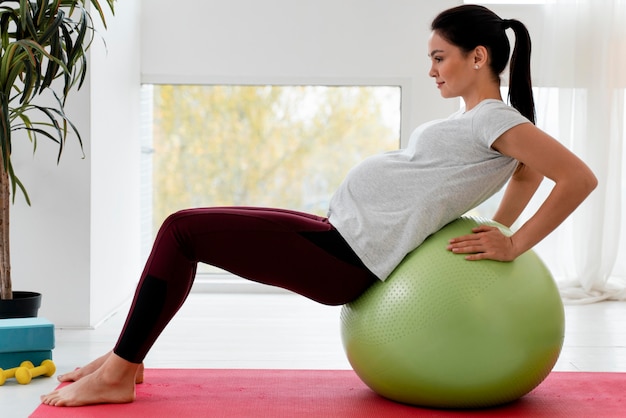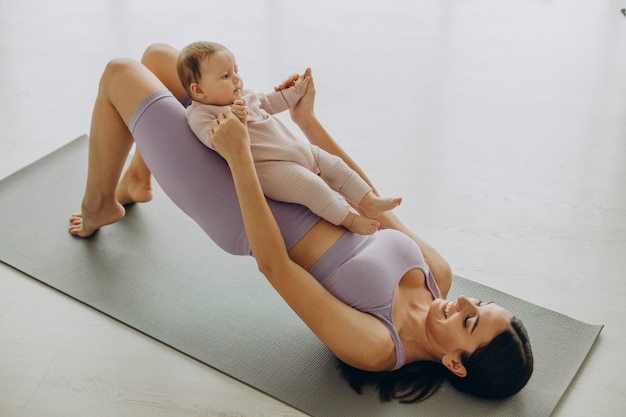20 Mobility Mistakes During Pregnancy & Postpartum (And How to Fix Them Safely)
Maintaining mobility during pregnancy and the postpartum period is essential for comfort, strength, and long-term recovery. Yet, even with the best intentions, many women unknowingly make mistakes that hinder progress or increase injury risk. Whether you're expecting or healing after childbirth, understanding these 20 common errors—and how to correct them—can help you stay safe, mobile, and empowered.
Why Mobility Matters During Pregnancy & Postpartum
Mobility—the ability to move freely and without pain—supports posture, pelvic floor health, and overall function. Hormonal changes (like increased relaxin) loosen ligaments, making joints more vulnerable. Meanwhile, shifting weight distribution alters alignment. Without proper mobility work, these changes can lead to back pain, pelvic instability, and prolonged recovery.

20 Common Mobility Mistakes & How to Fix Them
- Skipping Warm-Ups: Jumping into movement without preparing your body increases strain risk. Fix: Begin with 5 minutes of light walking or dynamic stretches like arm circles and ankle rolls.
- Overstretching Due to Hormonal Changes: Relaxin makes ligaments more pliable. Pushing too far can cause joint instability. Fix: Focus on controlled movement, not maximum flexibility. Stop before feeling a deep pull.
- Ignoring Pelvic Floor Engagement: Mobility without core and pelvic floor awareness can worsen diastasis or incontinence. Fix: Practice gentle Kegels and transverse abdominal activation during all movements.
- Doing High-Impact Exercises Late in Pregnancy: Jumping or running increases pelvic pressure. Fix: Switch to low-impact options like swimming or prenatal yoga after the first trimester.
- Skipping Postpartum Recovery Time: Returning to intense workouts too soon can delay healing. Fix: Wait for medical clearance (usually 6–8 weeks) and start with walking and breathing exercises.
- Not Adjusting for Belly Size: As your belly grows, exercises like planks become unsafe. Fix: Modify positions—use incline planks or switch to standing core work.
- Overlooking Breathing Mechanics: Shallow breathing limits core stability and mobility. Fix: Practice diaphragmatic breathing: inhale deeply into the ribs and belly, exhale fully.
- Performing Deep Squats Without Support: This can strain the pelvic floor. Fix: Use a wall or chair for support and keep squats shallow during late pregnancy.
- Ignoring Hip Flexor Tightness: Sitting more during pregnancy tightens hip flexors, affecting posture. Fix: Do gentle lunges or kneeling hip flexor stretches daily.
- Skipping Glute Activation: Weak glutes contribute to back and pelvic pain. Fix: Add clamshells, glute bridges, and banded walks 3x/week.
- Using Poor Posture During Daily Activities: Bending at the waist instead of hips strains the back. Fix: Practice hip hinges when picking up objects or getting out of bed.
- Not Hydrating Enough: Dehydration reduces tissue elasticity and joint lubrication. Fix: Aim for 8–10 glasses of water daily, more if active.
- Overdoing Core Work Postpartum: Traditional crunches can worsen diastasis recti. Fix: Focus on transverse abdominis exercises like dead bugs or pelvic tilts.
- Skipping Rest Days: Overtraining slows recovery. Fix: Schedule 1–2 rest days weekly, especially postpartum.
- Not Using Supportive Footwear: Flat shoes increase joint stress. Fix: Wear supportive, cushioned shoes even at home.
- Ignoring Pain Signals: Discomfort is a warning sign. Fix: Stop any movement causing sharp or radiating pain and consult a pelvic floor therapist if needed.
- Skipping Mobility After Cesarean: Scar tissue can limit movement. Fix: Once cleared, perform gentle scar mobilization and breathing exercises.
- Comparing Progress to Others: Every body recovers differently. Fix: Set personal, realistic goals and celebrate small wins.
- Not Setting Weekly Targets: Lack of structure leads to inconsistency. Fix: Follow a simple weekly plan (see below).
Weekly Mobility Targets
- Days per Week: 4–5 days of mobility work
- Duration: 15–20 minutes per session
- Focus Areas: Hips, pelvis, spine, shoulders
- Include: Breathing drills, dynamic stretches, light strength
- Track Progress: Note pain levels, range of motion, and energy

Safety Reminders
- Always consult your healthcare provider before starting or resuming exercise.
- Stop immediately if you experience dizziness, bleeding, or pelvic pressure.
- Avoid lying flat on your back after the first trimester.
- Use support (wall, chair, band) when needed.
- Listen to your body—rest is part of progress.
Final Thoughts
Mobility during pregnancy and postpartum isn’t about pushing limits—it’s about moving with intention, safety, and self-awareness. By avoiding these 20 common mistakes and following a mindful routine, you can support your body’s natural strength and resilience throughout this transformative time.

















